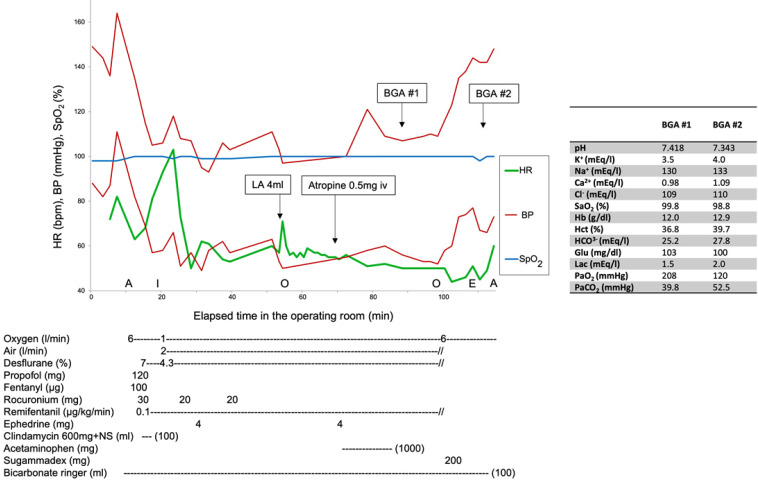General anesthesia with a transcutaneous pacemaker for a Noonan syndrome patient with advanced atrioventricular block discovered in the remote period after open-heart surgery: a case report.
Journal of Dental Anesthesia and Pain Medicine
Pub Date : 2023-04-01
DOI:10.17245/jdapm.2023.23.2.111
引用次数: 0
Abstract
We provided general anesthesia management to a patient with advanced atrioventricular block, which was discovered in the remote period after open-heart surgery. A 21-year-old man with Noonan syndrome was scheduled to undergo excision of a median intramandibular tumor. At 2 months of age, the patient underwent endocardial repair for congenital heart disease. During our preoperative examination, an atrioventricular block was detected, which had not been previously noted. Emergency drugs were administered, and a transcutaneous pacemaker was placed. During anesthesia induction, mask ventilation was easy, and intubation was performed smoothly using a video laryngoscope. The transcutaneous pacemaker was activated in demand mode at a pacing rate of 50 cycles/min approximately throughout the anesthesia time, and the hemodynamic status remained stable. The effect of intraoperatively administered atropine was brief, lasting only a few seconds. Although body movements due to thoracoabdominal muscle spasm were observed during pacemaker activation, they did not interfere with surgery. In postoperative patients with congenital heart disease, an atrioventricular block may be identified in the remote period, and preoperative evaluation should be based on this possibility. In addition, during anesthesia management, it is important to prepare multiple measures to maintain hemodynamic status.



经皮心脏起搏器全麻治疗在心脏直视手术后发现的晚期房室传导阻滞的Noonan综合征患者:1例报告。
我们对一位在心脏直视手术后发现的晚期房室传导阻滞患者进行了全身麻醉处理。一位患有努南综合征的21岁男性被安排接受下颌正中肿瘤的切除。在2个月大时,患者接受了先天性心脏病的心内膜修复。在术前检查中,我们发现了房室传导阻滞,这是以前没有注意到的。给予紧急药物,并放置经皮起搏器。在麻醉诱导过程中,面罩通气容易,在视频喉镜下插管顺利。在麻醉期间,经皮起搏器以约50周期/分钟的起搏速率在需求模式下激活,血流动力学状态保持稳定。术中给予阿托品的效果是短暂的,仅持续几秒钟。虽然在起搏器激活期间观察到胸腹肌痉挛引起的身体运动,但它们并不干扰手术。先天性心脏病术后患者可能在远期发现房室传导阻滞,术前应基于这种可能性进行评估。此外,在麻醉管理过程中,重要的是准备多种措施来维持血流动力学状态。
本文章由计算机程序翻译,如有差异,请以英文原文为准。
求助全文
约1分钟内获得全文
求助全文

 求助内容:
求助内容: 应助结果提醒方式:
应助结果提醒方式:


